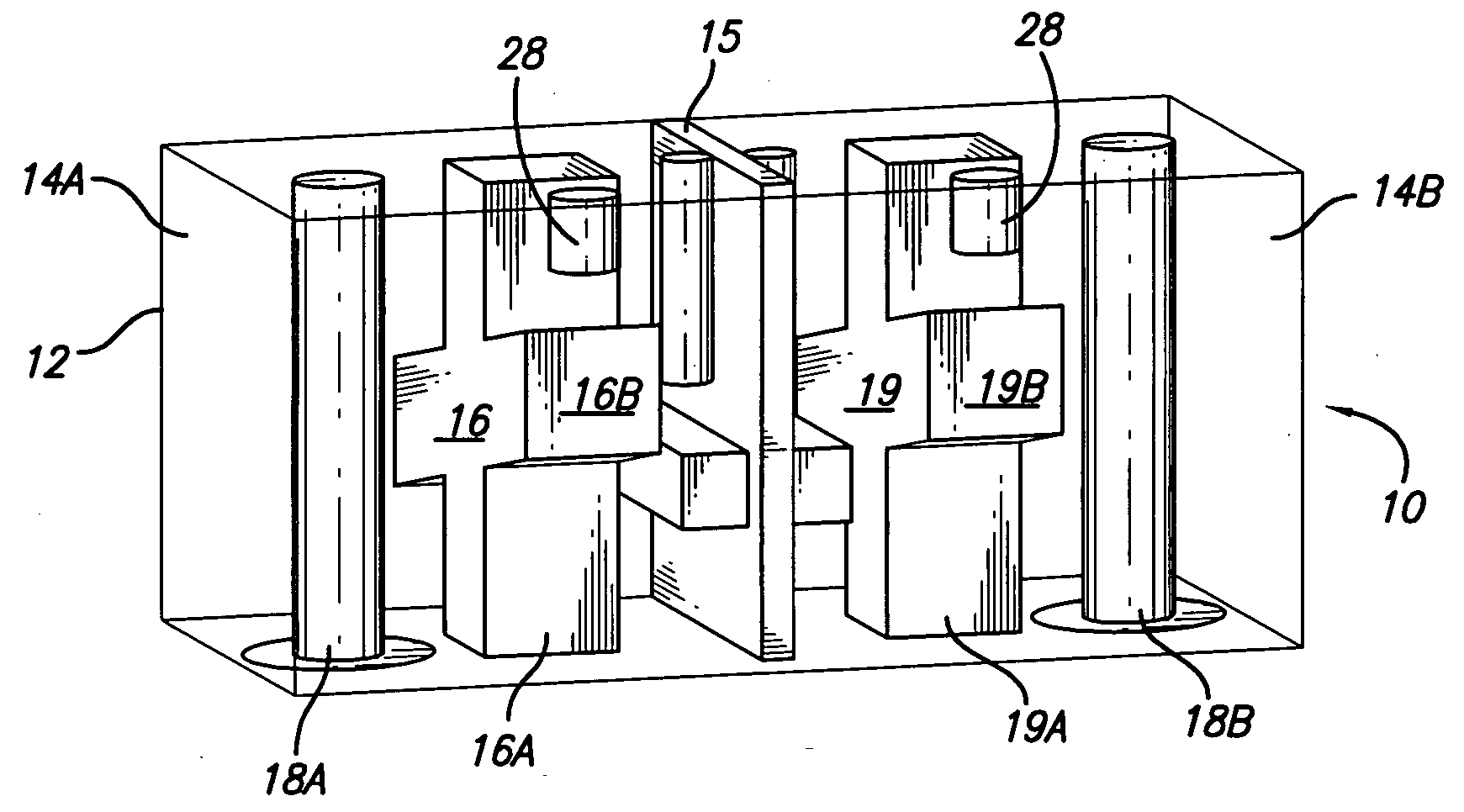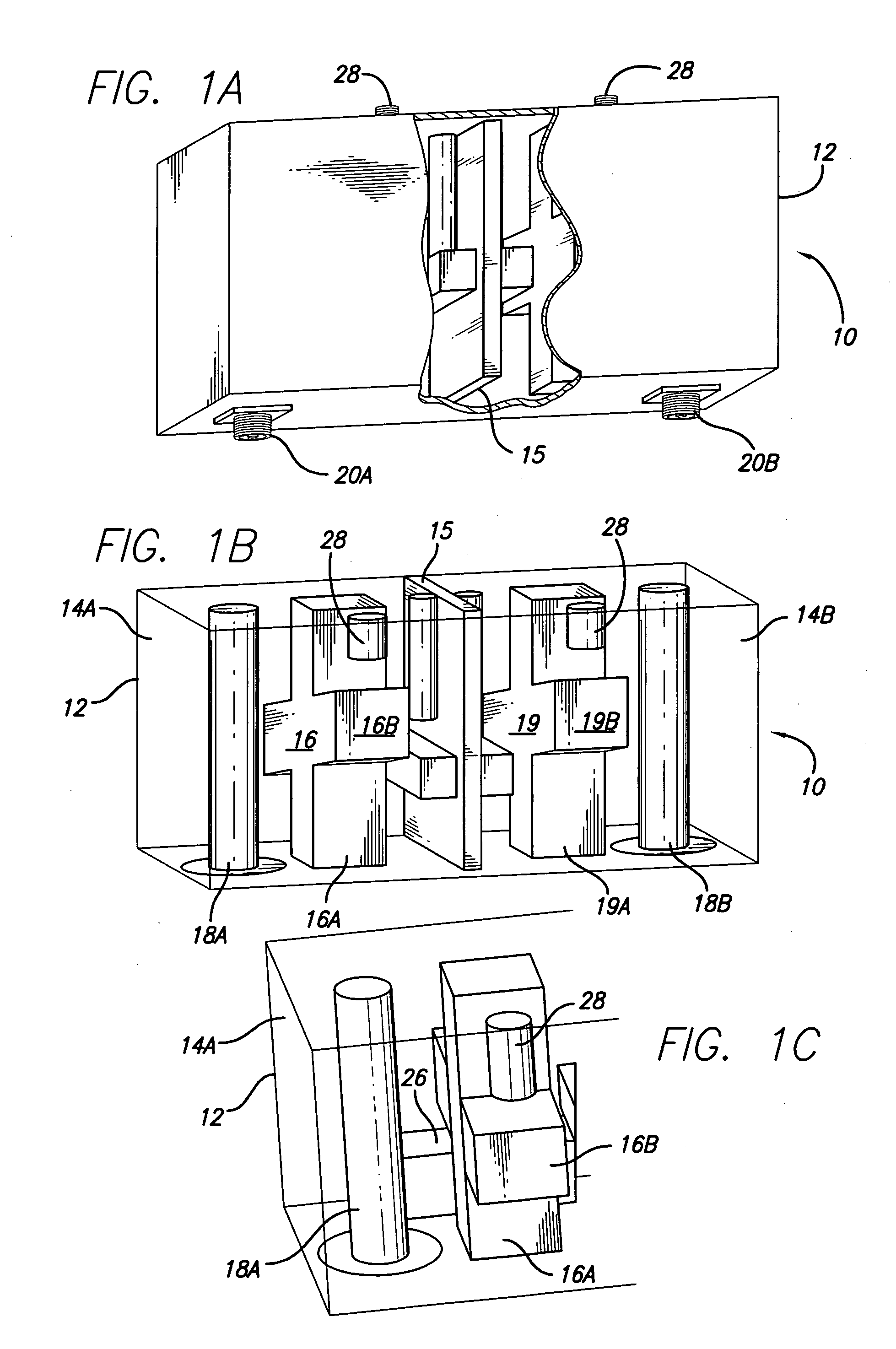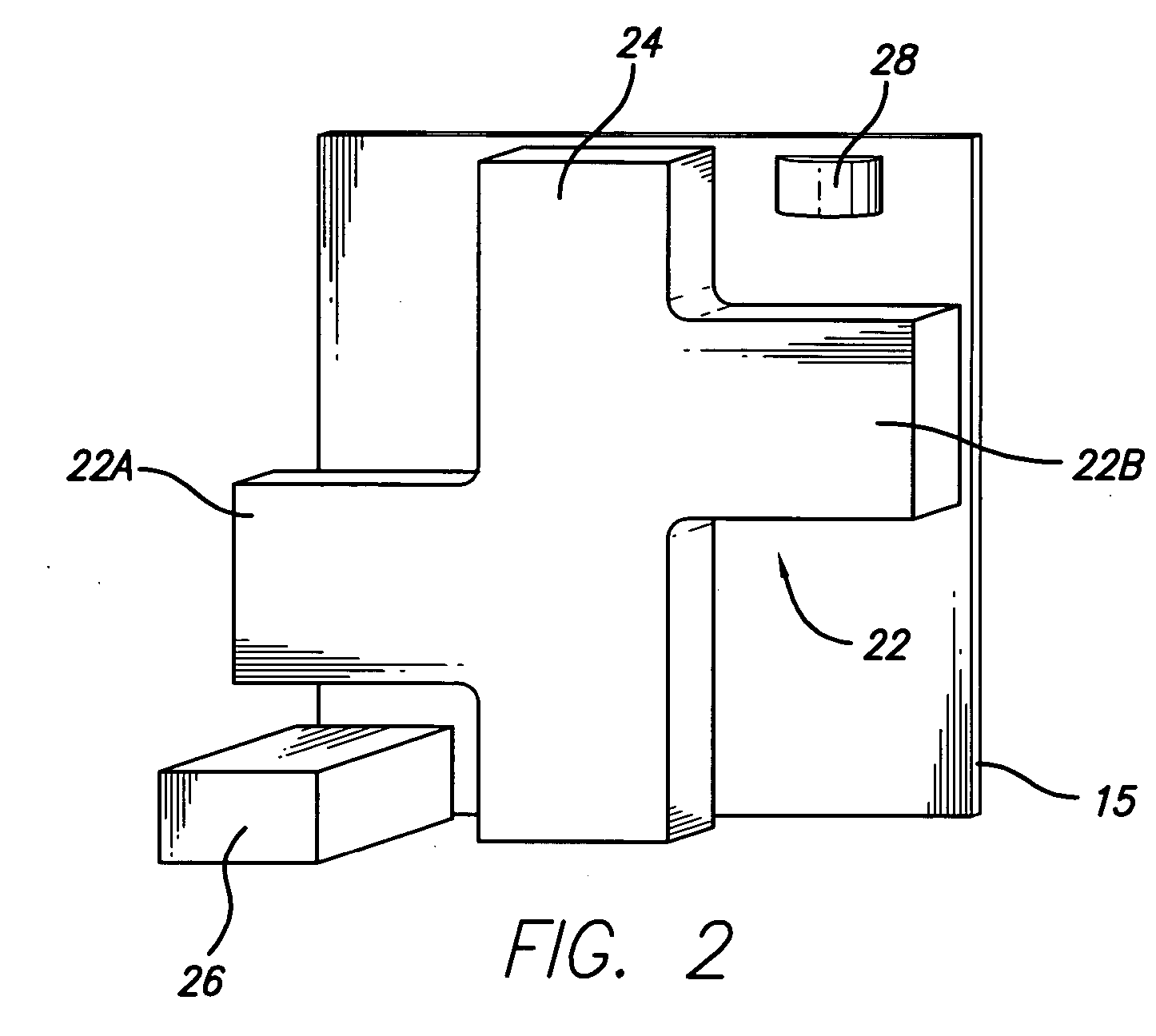Dual mode ceramic filter
- Summary
- Abstract
- Description
- Claims
- Application Information
AI Technical Summary
Benefits of technology
Problems solved by technology
Method used
Image
Examples
Embodiment Construction
[0052] The present invention provides a structure for smaller basestation filters. Specific embodiments and various features and aspects of the invention are described below.
[0053]FIG. 1A is a partially broken-away perspective view of a filter 10 having a rectangular-shaped metal case 12, according to an embodiment of the present invention. FIG. 1B shows a perspective view of the interior of the filter of 10FIG. 1A, providing two cavities (i.e., 14A, 14B) separated by a wall 15, wherein each cavity houses a transverse magnetic (TM) dual mode resonator. A first TM dual mode resonator 16 is formed by resonator members 16A, 16B crossing each other at a mid-point to form a “cross” or “X” in cavity 14A. A second TM dual mode resonator 18 is formed by resonator members 19A, 19B crossing each other at a mid-point to form as a “cross” or “X” in cavity 14B. The filter case 12 further houses input pins (i.e., 18A, 18B) coupled to coaxial connectors (i.e., 20A, 20B). In this structure, there ...
PUM
 Login to View More
Login to View More Abstract
Description
Claims
Application Information
 Login to View More
Login to View More - R&D
- Intellectual Property
- Life Sciences
- Materials
- Tech Scout
- Unparalleled Data Quality
- Higher Quality Content
- 60% Fewer Hallucinations
Browse by: Latest US Patents, China's latest patents, Technical Efficacy Thesaurus, Application Domain, Technology Topic, Popular Technical Reports.
© 2025 PatSnap. All rights reserved.Legal|Privacy policy|Modern Slavery Act Transparency Statement|Sitemap|About US| Contact US: help@patsnap.com



